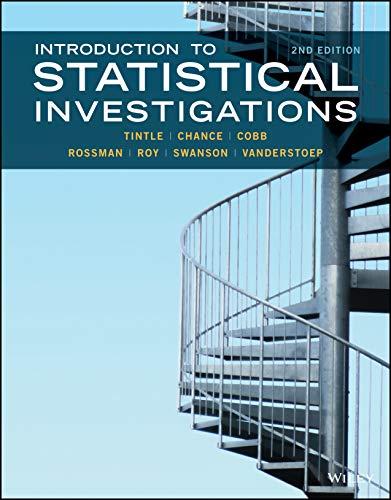Recall Exercise 7.3.34 about comparing ratings of intensity for male-named hurricanes and female-named hurricanes. a. Put the
Question:
Recall Exercise 7.3.34 about comparing ratings of intensity for male-named hurricanes and female-named hurricanes.
a. Put the data into the Matched Pairs applet to find the sample mean, sample standard deviation, and sample size of the differences in ratings.
b. Use the Theory-Based Inference applet to find a 95% confidence interval for the long-run mean difference.
c. Interpret the confidence interval you obtained in the context of the problem.
d. Based on your confidence interval, do you have strong evidence that there is a difference, on average, in the intensity ratings between male- and female-named hurricanes? Explain.
e. While you might have found that you have strong evidence for a difference in the mean ratings, is there evidence of a strong effect? In other words, is the difference large? Explain your reasoning.
Data from Exercise 7.3.34
A study done by Jung et al. (2014) looked at hurricane names and the perceived threat. The researchers thought that hurricanes in the United States with male names would differ in perceived danger from hurricanes with female names. In one part of the research 346 subjects were shown five male names (Arthur, Cristobal, Omar, Kyle, Marco) and five female names (Bertha, Dolly, Fay, Laura, Hanna) from the official 2014 Atlantic Hurricane names and were asked to predict each hurricane’s intensity (1 = not intense at all, 7 = very intense). The data are available in the file Hurricane. Is there a difference in how people would rate the intensity of the same hurricanes based on a male or female name?
Step by Step Answer:

Introduction To Statistical Investigations
ISBN: 9781119683452
2nd Edition
Authors: Beth L.Chance, George W.Cobb, Allan J.Rossman Nathan Tintle, Todd Swanson Soma Roy





